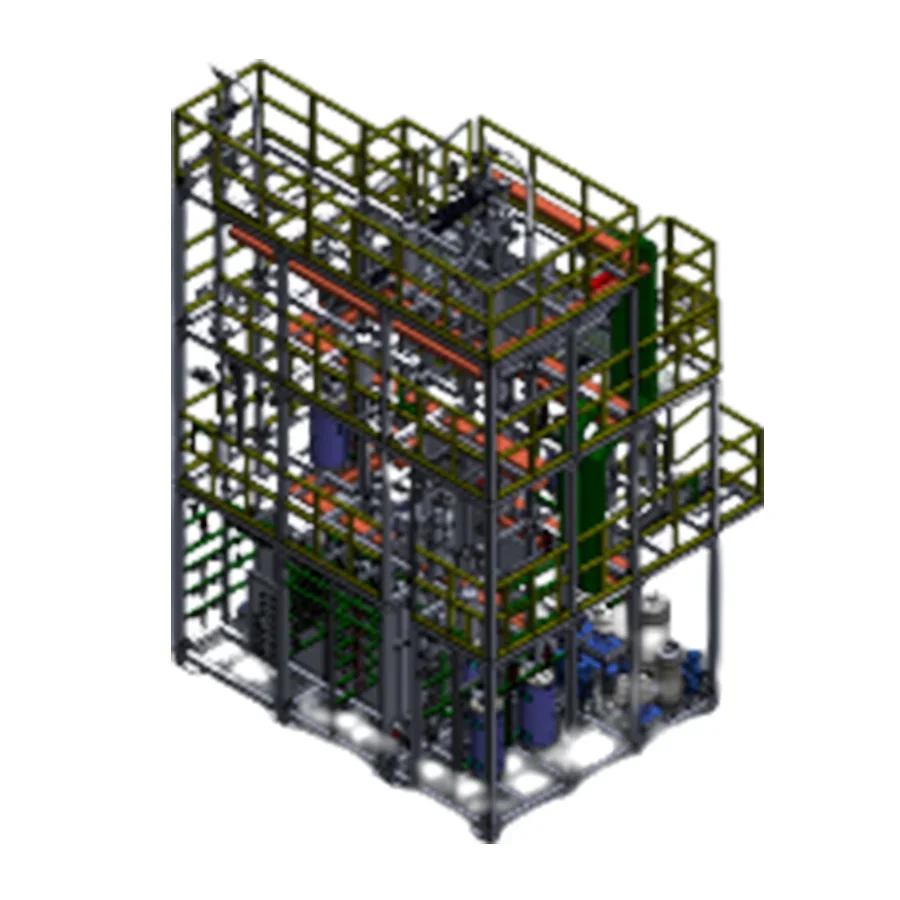Fluidized-bed units have emerged as a game-changer in numerous industries, providing highly efficient and adaptable solutions for a diverse array of processes. Among the leading manufacturers in this field, Chem-Unit Technologies stands out for its expertise in producing fluidized-bed units of various scales, including pilot-scale, production-scale, and testing-scale units. In this article, we will delve into the fascinating realm of fluidized-bed units, examining their operational principles, different types, wide-ranging applications, and the multitude of advantages they offer.
What is a Fluidized-Bed Unit?
A fluidized-bed unit is a specialized apparatus used in various industries for processes that involve the interaction of solid particles with a fluid, typically a gas or a liquid. It consists of a bed of solid particles that are suspended and fluidized by the upward flow of the fluid. This fluidization creates a dynamic and highly efficient environment for various chemical, physical, and biological reactions.

Working Principles of Fluidized-Bed Units
Fluidized-bed units operate based on the principle of fluidization, which involves the controlled flow of fluid through a bed of solid particles. When the fluid velocity is increased to a certain threshold, the drag force exerted by the fluid on the particles overcomes the gravitational force, causing the particles to become suspended and behave like a fluid. This state is known as fluidization.
The fluidization process offers several advantages, including increased heat and mass transfer rates, uniform temperature distribution, and enhanced mixing. These benefits make fluidized-bed units highly efficient for a wide range of applications.
Types of Fluidized-Bed Units
Fluidized-bed units can be classified into different types based on their design and operating conditions. Some common types include:
Bubbling Fluidized-Bed Units: In this type, the fluid velocity is relatively low, causing the particles to form bubbles and exhibit a bubbling behavior. Bubbling fluidized-bed units are commonly used for applications such as combustion, gasification, and drying.
Circulating Fluidized-Bed Units: In circulating fluidized-bed units, the fluid velocity is high enough to entrain and circulate the solid particles within the unit. This type is often used for applications such as combustion, chemical reactions, and particle coating.
Spouted Bed Units: Spouted bed units operate on the principle of a high-velocity gas jet that creates a spout or fountain of solid particles. This type is suitable for applications such as drying, granulation, and coating.
Applications of Fluidized-Bed Units
Fluidized-bed units find extensive applications across various industries due to their versatility and efficiency. Some notable applications include:
Chemical and Petrochemical Industry: Fluidized-bed units are widely used in the chemical and petrochemical industry for processes such as catalytic cracking, polymerization, and fluidized-bed reactors for producing various chemicals and fuels.
Pharmaceutical Industry: Fluidized-bed units are utilized in the pharmaceutical industry for processes such as granulation, drying, and coating of pharmaceutical powders and particles.
Food and Beverage Industry: Fluidized-bed units are employed in the food and beverage industry for processes such as drying, roasting, and coating of food products.
Environmental Applications: Fluidized-bed units play a crucial role in environmental applications such as flue gas desulfurization, waste incineration, and biomass combustion, offering efficient and clean solutions for pollution control.
Energy Production: Fluidized-bed units are utilized in energy production processes such as coal combustion, biomass gasification, and steam generation, offering high efficiency and low emissions.
Advantages of Fluidized-Bed Units
Fluidized-bed units offer several advantages over traditional solid-bed reactors or other types of reactors. Some key advantages include:
Enhanced Heat and Mass Transfer: The fluidization process in fluidized-bed units promotes efficient heat and mass transfer, leading to faster reaction rates and improved process efficiency.
Uniform Temperature Distribution: The fluidization process ensures a uniform temperature distribution throughout the bed, minimizing hot spots and improving product quality.
Excellent Mixing: The fluidization of particles in fluidized-bed units results in excellent mixing, ensuring uniform contact between reactants and enhancing reaction efficiency.
Flexibility and Scalability: Fluidized-bed units can be easily scaled up or down to meet different production requirements, making them highly flexible and adaptable to various process conditions.
Reduced Fouling and Plugging: The fluidization process helps prevent fouling and plugging of the reactor, reducing maintenance and downtime.
Conclusion
Fluidized-bed units have revolutionized industries by offering efficient and versatile solutions for a wide range of processes. Chem-Unit Technologies, a prominent manufacturer in this field, specializes in producing fluidized-bed units of different scales to cater to various needs. With their unique working principles, diverse types, and extensive applications, fluidized-bed units have proven to be indispensable tools in enhancing productivity and efficiency across numerous industries. As technology continues to advance, fluidized-bed units are expected to play an even more significant role in driving innovation and sustainability across industries.